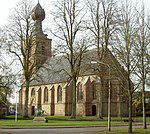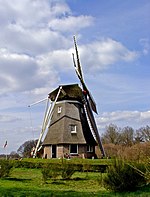Dwingelderveld National Park
1991 establishments in the NetherlandsGeography of DrentheIUCN Category IINational parks of the NetherlandsProtected areas established in 1991 ... and 2 more
Tourist attractions in DrentheWesterveld

Dwingelderveld National Park is a national park of the Netherlands in the province of Drenthe, founded in 1991. The park covers about 37 km2 (14 sq mi) and is mainly managed by the State Forest Service (Staatsbosbeheer) and the most important Dutch private nature management organisation Natuurmonumenten. It is the largest wet heathland of Western-Europe. Dwingelderveld is also designated as a Natura 2000-area.
Excerpt from the Wikipedia article Dwingelderveld National Park (License: CC BY-SA 3.0, Authors, Images).Dwingelderveld National Park
Benderse, Westerveld
Geographical coordinates (GPS) Address Nearby Places Show on map
Geographical coordinates (GPS)
| Latitude | Longitude |
|---|---|
| N 52.803 ° | E 6.399 ° |
Address
Benderse
Benderse
7991 NG Westerveld
Drenthe, Netherlands
Open on Google Maps









